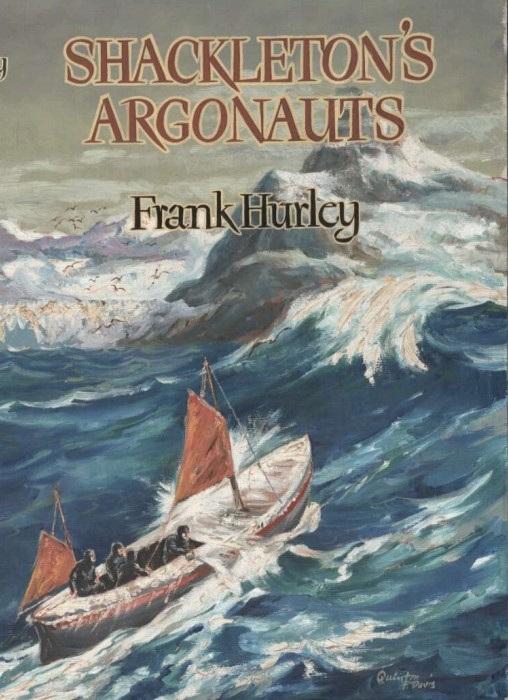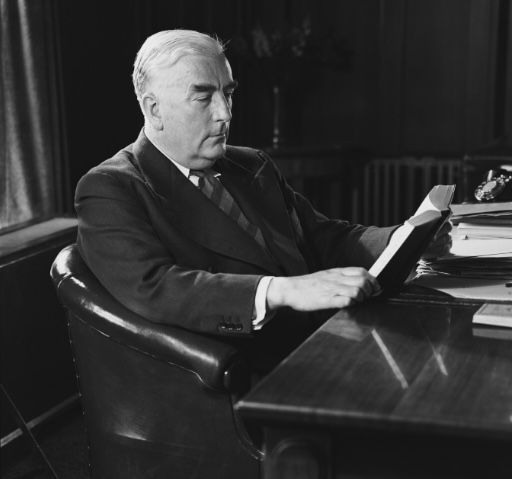Frank Hurley, Shackleton’s Argonauts: A Saga of the Antarctic Ice-Packs (1957)
Children’s Book Week is an Australian institution, helping to inculcate a love of reading in generations Aussie kids and inevitably stressing out their parents, who bear the responsibility for organising the ever more elaborate costumes they are expected to wear to mark the occasion. Robert Menzies grew up in an era before the annual festival had established itself, but he was nevertheless shaped by the book loving culture that would come to embrace it. With his mother Kate recalling that her boy was a veracious bookworm, crediting his wide reading for setting the platform for his future success, and insisting that ‘I can never mention a book without him having read it’. By the time Menzies got to university Kate said that ‘he used to look at a law book as affectionately as if it was his first-born child’.
Although Australia the origin’s of Australia’s rich tradition of children’s literature date back to the 19th and early twentieth centuries, with titles like Ethel Turner’s Seven Little Australians (1893), May Gibbs’s Gumnut Babies series (from 1916), and Norman Linday’s The Magic Pudding (1918); Book Week was prompted by a concern that many of the books that children were reading were not age appropriate. The movement was started by Franklin Matthews, the librarian of the Boy Scouts of America, who was horrified by the books he discovered young boys were reading, and toured the United States in 1913 to advocate for publishers to produce more books that were specifically written for kids.
The American idea quickly spread to other countries around the world, but its import to Australia was driven by the circumstances of the war, and what amounted to a friendly occupation of the country by American servicemen and women. It was Mary Townes Nyland, who oversaw the United States Information Library in Sydney, who led the call for a local Children’s Book Week, an idea which quickly spread like wildfire across the Australian states.
The theme for the inaugural Book Week held in 1945 was ‘United Through Books’, a title evoking the fact that the recently-victorious allied forces had come to refer to themselves as the ‘United Nations’, and also suggesting the need for various cultures to learn more about one another in order to promote understanding and prevent any future outbreak of global conflict. The celebrations involved radio broadcasts, a post competition, local library exhibits and school events. The tradition of dressing up as characters from famous books evolved organically and sporadically, with costumed ‘book pageants’ being recorded from the early 1950s. That same decade also saw the prevalence of getting children to design their own personalised bookplate, in order to claim ownership of their own growing collection of literature.
The Book of the Year awards were introduced from 1946, and served to further Matthews’s original aim of encouraging publishers to invest in children-specific authors. From the outset, the awards tended to favour Australian subject matter, helping to cultivate the emergence of Australia’s post-British identity. The inaugural winner was Leslie Rees’s The Story of Karrawingi the Emu, and the 1955 crowning of The First Walkabout by Norman Tindale & Harold Lindsay, shows how within 10 years of its creation Book Week was already embracing First Nations stories.
Another notable feature of the awards was promoting not just children’s literature, but also child-targeted non-fiction, aimed at expanding children’s knowledge and inspiring their future contributions to the Australian nation, and science and discovery more broadly. Hence, the second ever winner of the Book of the Year was famed Australian photographer Frank Hurley who had accompanied both Douglas Mawson and Ernest Shackleton on their Antarctic exhibitions, and who inflamed the imaginations of countless young explorers by turning the latter into Shackleton’s Argonauts.
Menzies was a long-time friend of Hurley, who had accompanied him during a trip to the Middle East during World War Two, and who personally gifted the prime minister a copy of the 1957 reprint.
You might also like...
Sign up to our newsletter
Sign up for our monthly newsletter to hear the latest news and receive information about upcoming events.


